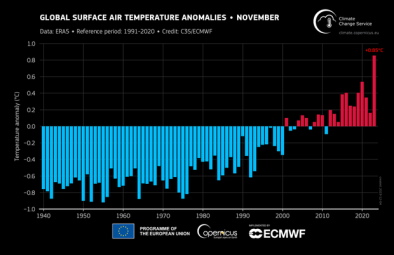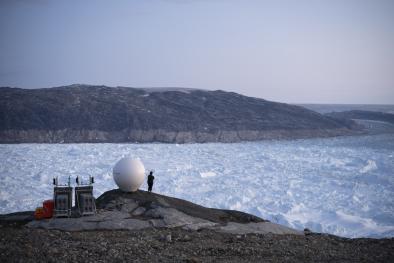Stormier Southern Hemisphere induced by topography and ocean circulation
Significance
Storms and extreme weather events are stronger in the Southern Hemisphere than in the Northern Hemisphere. Using an energetic perspective, observations, and climate model simulations, we show that the stormier Southern Hemisphere is induced by topography and the ocean circulation, which transports energy from the Southern to the Northern Hemisphere. We also show that the recent increase in Southern Hemisphere storminess is connected to changes in implied ocean energy transport in the Southern Ocean. Northern Hemisphere storminess has not changed significantly because the ocean changes are opposed by the absorption of sunlight due to the loss of sea ice and snow. These observed changes are qualitatively consistent with climate model projections.
Abstract
A defining feature of Earth’s present-day climate is that the Southern Hemisphere is stormier than the Northern Hemisphere. Consistently, the Southern Hemisphere has a stronger jet stream and more extreme weather events than the Northern Hemisphere. Understanding the relative importance of land–ocean contrast, including topography, radiative processes, and ocean circulation for determining this storminess asymmetry is important and may be helpful for interpreting projections of future storminess. Here, we show that the stormier Southern Hemisphere is induced by nearly equal contributions from topography and the ocean circulation, which moves energy from the Southern to Northern Hemisphere. These findings are based on 1) diagnostic energetic analyses applied to observations and climate model simulations and 2) modifying surface (land and ocean) boundary conditions in climate model simulations. Flattening topography and prescribing hemispherically symmetric surface energy fluxes (the manifestation of ocean energy transport on the atmosphere) in a climate model reduce the storminess asymmetry from 23 to 12% and 11%, respectively. Finally, we use the energetic perspective to interpret storminess trends since the beginning of the satellite era. We show that the Southern Hemisphere has become stormier, consistent with implied ocean energy transport changes in the Southern Ocean. In the Northern Hemisphere, storminess has not changed significantly consistent with oceanic and radiative (increased absorption of sunlight due to the loss of sea ice and snow) changes opposing one another. The trends are qualitatively consistent with climate model projections.
Related Content






